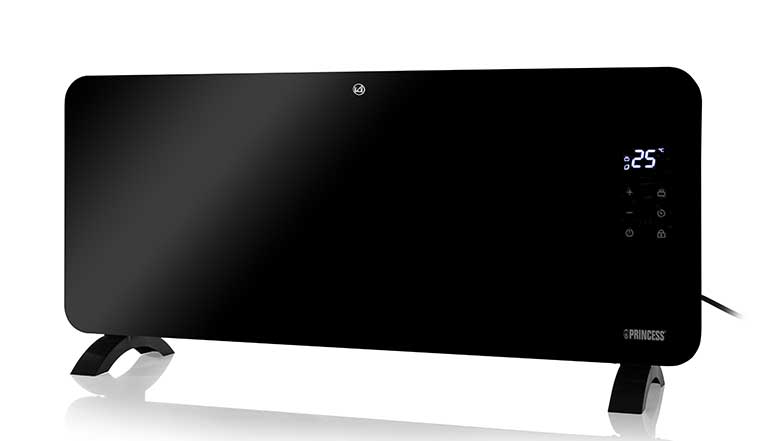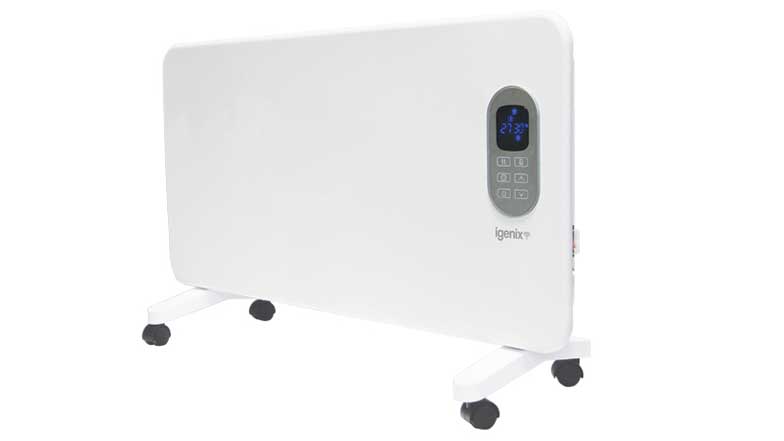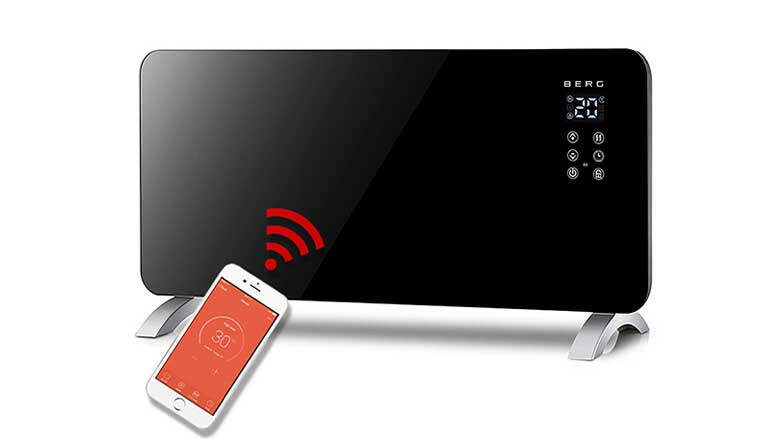Smart heater
Smart heaters are electric heaters you can control remotely using an app on your phone or tablet or with a smart home device like Amazon Alexa or Google Home. By integrating these heaters with your smart home devices you can also operate them with voice control. Smart electric heaters can be an intelligent addition to your heating system, giving you precise control over temperature, allowing you to heat specific rooms and even switch them off when you’re away from home.
On this page
What are smart heaters?
Smart heaters connect to smart devices, such as your smartphone or tablet, using a wifi connection or Bluetooth so that you can control them remotely.
Smart heaters have a built-in thermostat that allows you to set a target temperature for the room so it turns off once it gets hot enough. Many smart heaters also allow you to programme a schedule, so you can come home to a room that's already warm. With some smart heaters, you can set a schedule over seven days, which is helpful if you’re at home more at the weekends than on weekdays, for example. Having remote control means you can easily override the schedule if your plans – or the weather - change while you're out.
As with non-smart electric radiators, the benefits of smart heaters include:
-
Being easy to maintain as they don't need to be bled to keep running efficiently.
-
Being easy to install without an engineer or electrician (unless you're going to use it in a bathroom.)
-
Providing extra heating to specific rooms during the winter months.
-
Having the choice of freestanding and portable or wall-mounted.
Unlike a smart thermostat which connects to your central heating and must be installed by a qualified professional, an individual smart heater gives you control of the temperature in a specific room. If you use more than one, you can tailor the temperature in each room with a smart heater without needing to install a smart thermostat. Another cheaper alternative is a wifi radiator valve.
Are smart electric radiators expensive to run?
The rising cost of home heating is a concern for everyone. Electric radiators are generally more expensive to run than gas central heating, even now. However, there may be a useful role for a smart heater, for example, to heat just one room such as a home office. Many factors affect the running cost of a smart heater, including the size and insulation of the room it's in. Some of the ways to keep the cost of running a smart heater down include:
- Avoiding turning on the central heating if you only need to heat one room using a smart radiator.
- Turning the heater on and off exactly when needed, can be especially helpful when you're away from home.
- Using energy-efficient settings your model may have such as eco and anti-frost.
- Using the inbuilt thermostat to heat a room to your desired temperature, at which point the heater will turn off. Monitoring the manufacturer's app to check your heater’s energy usage.
- Keeping a record of the manufacturer’s warranty, in case anything goes wrong, though, without moving parts, smart heaters are quite reliable.
What are the benefits of wifi-enabled smart heaters for the visually impaired?
Smart technology can make it easier for you to be independent at home. Along with the other benefits of smart heaters, integration with smart home devices can give you hands-free voice control. This means you don't have to fiddle with control panels which often aren't always easy to use for people with sight loss. It also means you can switch the heater on or off or adjust the temperature setting without having to move around, find the heater, or even get up from your chair!
Make sure you research the smart heaters you’re interested in before you buy. Check whether the heater is controlled by an app compatible with the accessibility features on your device. To get the most out of your heater, check if it’s compatible with any smart home devices you already use. You may want the support of a friend or family member to get your smart heater up and running if you’re new to smart home technology.
How we choose the best smart heaters
Some features of smart heaters will be particularly important if you have a vision impairment such as an easy-to-use control panel and integration with your existing smart home device. You'll still want a heater that suits your other needs, including size and additional features.
- Smart heaters have different power capacities, from 600 to 3000 watts. The higher the wattage, the bigger the space it can heat, but the more expensive the heater. For example, this Mylek range starts at £115 for the 600-watt model rising to £160 for the 2000-watt model.
- Different heaters use different methods to warm up a space. A fan heater uses a fan to disperse heat around the room. A convector heater (like the Princess Smart Glass Panel heater) relies on hot air rising to spread warmth through the room, so it can be slower to heat than fan heaters. Oil-filled radiators can be slower to warm up, but because the oil retains heat well, they can stay warm for longer.
- Many heaters can be either freestanding or wall-mounted. A freestanding heater is likely to be more portable, but the weight and size will influence how easy it is to move. Heaters with castors instead of fixed feet (such as the Igenix) can be a good choice if you want portability.
- Smart heaters give you remote control via an app you download to a smartphone or tablet. Many also integrate with smart assistants like Google Assistant or Amazon's Alexa.
- Smart heaters also have inbuilt control panels, with varying features like touchscreen, LED display, and buttons.
- Some smart heaters can include additional features such as open window detection to help save energy and even inbuilt air purifiers. Most modern heaters are Lot 20 compliant, meaning they comply with EU legislation to improve home heating appliances' energy efficiency. Others have a child lock so young children can’t tamper with the settings or accidentally turn it on. This feature can disable voice control, so you may need to consider whether it’s right for you.
- To use a smart heater in the bathroom, it needs to be IP24 rated and installed by an electrician in a location where someone in the bath or shower cannot reach it.
All the smart heaters we've included here have curved rather than sharp, angular edges, so for someone with sight loss, accidentally bumping into them shouldn’t be too painful.
Best smart heaters
Here are some facts about the best smart heaters available:
Technically reviewed by: Subject Matter Experts on 02/11/2023
Guide Dogs is committed to integrating technology into our service delivery and promoting excellence in accessibility and usability. Our staff undergo comprehensive training in technology and accessibility in collaboration with industry leaders like Apple. We foster knowledge of technology and create content through our Technology Champions, comprising Vision Rehabilitation Specialists and Habilitation Specialists. We review this content periodically to ensure that it is up to date and includes new features and changes with operating systems. We work with our partners to ensure accessibility is at the centre of the design. To find out more, there is more information in our accessibility policy.
Related content
- Headphones to help people with vision impairment
- Smartwatches for people with vision impairment
- Tech selector
- Apple parental controls
- Apps to Help People with Vision Impairment
- How to read braille
- Screen Readers and Text to Speech Software
- Talking kitchen scales
- Webinars
- Internet safety
- Internet safety for kids
- Alexa skills
- Best apps for navigating public transport
- Best smart thermostat
- Braille printer
- Large print keyboard
- Smart heater
- Smart lighting
- Smart plug
- Talking clock
- Tech for All learning programme
- What is the Amazon Echo
- What is braille?
- Watching TV with a vision impairment
- Android accessibility features
- Apple accessibility features
Whilst Guide Dogs may be able to suggest various third-party websites and third-party applications which may be able to assist you, those are not endorsed by Guide Dogs. Guide Dogs have no control over those third parties and cannot be held responsible for the accuracy of information and support they can provide or the suitability and quality of any products or services they provide.




